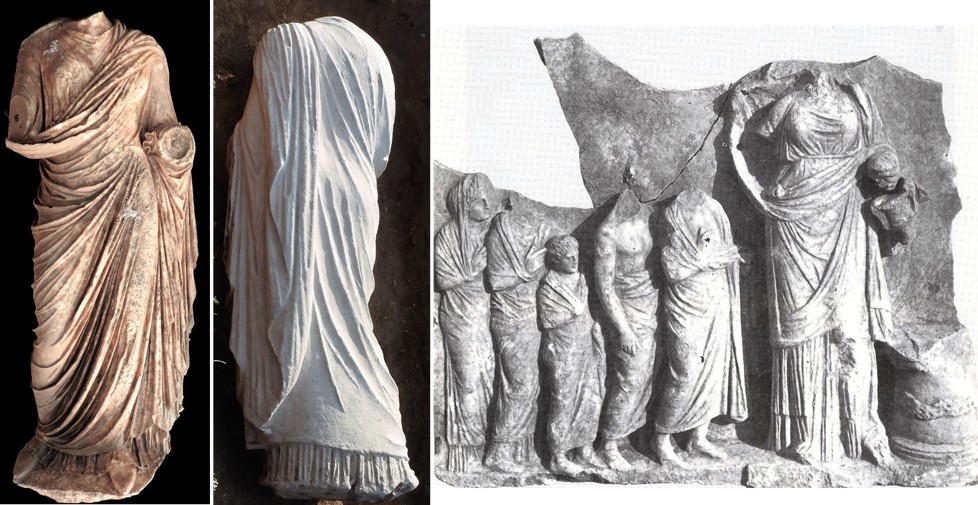Roman-Period Statue Unearthed in Southern Greece
On Thursday, December 16, an important find came to light at the market of ancient Epidaurus. This is a life-size marble female statue of very good quality.
The statue was found intact, with the exception of the arms, which were extra, and the head, which probably broke during its fall, leaving in its place the inserted mortar for fixing it.
This year the excavation period was over, but the heavy rainfall of the previous days, showed a small part of the back of the statue. in the area of the precinct, where the works have not yet proceeded to deeper layers.

In consultation with the Head of the Ephorate Alkisti Papadimitriou and with staff of the Ephorate of Antiquities of Argolida, the area was immediately excavated, under the supervision of the civil engineer of the Ephorate Ev. Kazolia and the excavator of the site V. Lambrinoudaki.
The statue represented a woman wearing a tunic and a robe.
The robe was fastened to the left shoulder and arm, from where it hung with rich folds.
One end of it passed behind the back, under the right armpit and was thrown sideways back, over the left shoulder.
In place of the right arm, surfaces that retain the ligaments from additional parts, indicate that the figure made the gesture of discovery , that is, the lifting of the robe with the right hand outwards and upwards, which was typical of married women in antiquity. , and with which the Health, wife or daughter of Asclepius was often depicted.
A first assessment places the work in imperial Roman times. The statue was transferred to a warehouse in the Asclepieion for storage, cleaning and maintenance.
A systematic excavation has been carried out at the site since 2015 by a research team of the University of Athens with the financial support of the Ioannis S. Latsis Public Benefit Foundation.
Near the theater of the ancient city (“small theater of Epidaurus” today), which was located in the ancient market, an important building of Krini has been discovered and connected to it an enclosure of the 4th BC. ai., which in Roman times acquired a new form with the addition of a portico on the west and a vaulted building on their north side.
Evidence has emerged that encourages the identification of this complex with the mosque of Asclepius mentioned by Pausanias in the city of Epidaurus.





